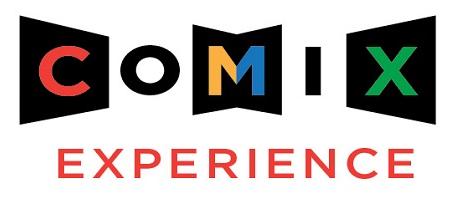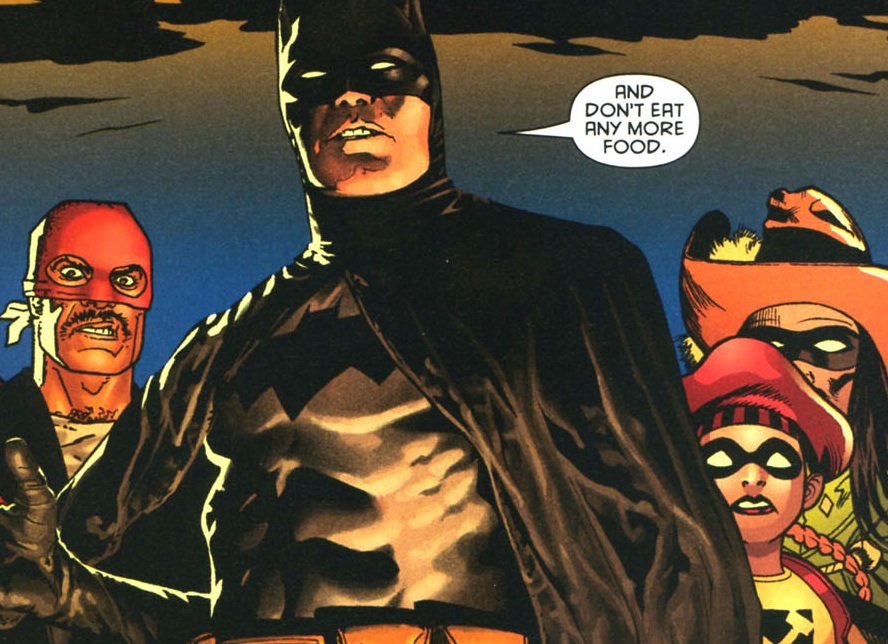 Hello, all. Let me tell you, I just couldn't wait to climb up here onto the internet today and tell you about my week so far; it's been a real roller coaster, unlike anything experienced by anyone before.
Hello, all. Let me tell you, I just couldn't wait to climb up here onto the internet today and tell you about my week so far; it's been a real roller coaster, unlike anything experienced by anyone before.
First off: the cheesesteak place by my office changed their primary cheese from white American to yellow American. This was big, and completely upset the lives of everyone in the city. I almost had a heart attack, and not the sort of heart attack I usually almost have when eating there. I couldn't believe there weren't news crews at the scene; I mean sure, sometimes I guess other sexy and upsetting things happen in the city -- somebody inflating a giant pig on the capital steps whenever a member of the state legislature is seen as naughty, for instance -- but I think we all need to get our priorities straight. Cheesesteaks are the stuff of life.
But there was another sharp turn in store for me this week, yet one I'd been hoping to clutch my ribs over: I happened upon a cache of bargain-priced English-language European comics in a store that had recently moved, and in that pile of stuff I managed to complete my English-language collection of Valérian: Spatio-Temporal Agent.
Which, by its nature, isn't going to be very complete, but let me explain.
Sometimes, comics hits from one culture translate well to another. Take Death Note. A very popular work in its native Japan, and pretty damned successful seemingly wherever it goes. It's caught on well among the English-language manga crowd for sure, and I expect the anime adaptation will do the same for anime viewers.
But then, sticking with manga for a moment, there's always something like Mushishi, a hugely acclaimed work that's also shown up on Best Of manga and anime lists, right alongside mighty hits like Dragonball Z. Yet there is little force behind the Mushishi manga in the US, which has had its US release schedule pushed back to a twice-yearly beat, which all but ensures that we won't be catching up to those Japanese editions any time soon. The anime just recently got released around here. Maybe it'll do better.
And Japanese comics, as you might have heard, are 'big' in English-speaking environs. Pity the poor Franco-Belgian comics, where even the longest-lived hits have a hard time in North America. Like the book I'm talking about here, which I'll now refer to as simply Valérian.
The brainchild of writer Pierre Christin (who would also write several stories for Enki Bilal) and artist Jean-Claude Mézières, Valérian has been in release since 1967, where it debuted in the pages of the famed comics magazine Pilote, which was already the home of the mighty Astérix and the famed western serial Blueberry. Christin and Mézières had attended school together as boys, and they reunited in the US of the mid-'60s, as Christin worked in Utah as a visiting professor and Mézières had been spending time as... an actual cowboy. Together, the created a hugely influential and popular sci-fi work, which has resolutely avoided catching on in the US, at least.
There are currently 21 'core' Valérian albums. The most recent was just released earlier this year. Of those, a grand total of seven have been officially translated into English and released for US consumption. Of those seven, two have been released no less than three times, including the obligatory run in Heavy Metal, and several different book collections from publishers like NBM. I don't have every iteration of all of these; rather, I have a series of four oversized albums released by Dargaud Canada Ltd. (later Dargaud International Publishing Inc.) from 1981-83, and a trade paperback omnibus titled : The New Future Trilogy, collecting three albums (somewhat in the style of the ill-fated DC/Humanoids venture) and released by iBooks in 2004.
It's interesting to see how the early books in particular are sold. The Dargaud volumes (and Dargaud is also the French publisher, so keep in mind I'm talking about the English-language wing of the time) don't contain any indication on the back cover as to what's exactly in these comics - rather, there's a solid wall of laudatory (if selective) quotes from American comics professionals, reading like:
"...one of my favorite SF epics..."
JIM STERANKO
"...truly beautiful comic artwork..."
ROY THOMAS
"...A wonderful balance of intellect and craft... a comic page that is structurally whole..."
WILL EISNER
"...tite ass shit indeed, Broseph..."
HARVEY KURTZMAN
Wait, no. Kurtzman's quote was simply "...WOW!" But you get the point.
I guess I understand the impulse. Maybe readers who really like one artist or writer will want to follow what said artist/writer likes. It's a technique that's met with limited success; surely some readers will recall Warren Ellis all but falling unconscious onto the pub floor promoting The Metabarons, and that sucker has still never been fully released to the US in English-language form. I suspect things were tougher for Valérian in the early '80s, although it's worth noting that some of the introductory material included in these books went out of its way to avoid talking about comic books, focusing instead on newspaper strips. Which makes sense, given the tender state of the comic book market at the time, and considering that the average Valérian page of the time was assembled from two or three serialized strips stacked atop one another. Look here, and note how the page is bisected into "25a" and "25b" in the bottom right corners of some panels.
I guess I should point you to Mézières' homepage in general; there's a million great things there, some of which are even in English, like the aforementioned Mr. Eisner's introduction to the initial Dargaud tome. Plenty of pretty pictures too.
But wait, what's this comic about? It's the adventures of the titular Valérian, who looks a bit like one Casanova Quinn, and travels through time and space on missions for the human space capital of Galaxity. He has a partner named Laureline, an assertive girl Valérian picked up from 11th century France, and quickly went from eye-candy romantic interest to near-protagonist. There's elements of continuity from book to book, including a massive shake-up about halfway through that saw Galaxity erased from time itself and the main characters left to wander as freelancers, but all of the Dargaud books are neatly self-contained, mostly concerning themselves with sci-fi adventure and gentle social/political satire.
And really nice art, by the way. Mézières started the series off in a very cartoonish manner, somewhat reminiscent of certain MAD artists to US readers. But he quickly tightened his style into something cute but detailed, with much attention paid to endearing character art and colorful environments. His use of shadows and backgrounds in these early stories can be quite striking, although detailed 'realism' (for what it's worth) always co-exists with sprightly comedy, some strong cartooning chops on display.
Indeed, Valérian is a true all-ages comic, at least in these stories. The earlier Dargaud stories, including World Without Stars (1971) and Welcome to Alflolol (1972), seem a bit like politically-active children's cartoons, in which Valérian and Laureline become caught up in some metaphoric business, like World Without Stars' literal war between the sexes on a distant world, involving hard, militaristic women and makeup-wearing male aesthetes. Both forces learn to not destroy their world before long. In Welcome to Alflolol, the duo see an ancient race return to their beloved home planet, which has happened to become the center of the Terran Galactic Empire's industrial development. Will they be cooped up on reservations? Forced to work for their living on a world they used to know? The resolution is pat, but Christin's sense of comedy and character is sound.
But Valérian the series got better as it went on, and Christin's satire grew more sophisticated, and Mézières stretched his art to more intensive design levels. The excellent Ambassador of the Shadows (1975) sees Our Heroes stuck escorting a belligerent human diplomat to the chaotic Central Point, a patchwork construct of societies that somehow runs the universe through its diverse counsel. The Ambassador plans to use warships to increase human influence, but he and Valérian are kidnapped, and Laureline is left to search through a multitude of small, capitalistic societies -- psychic jellyfish and shape-shifter prostitutes and literal dream merchants -- armed only with a lil' critter that shits out multiples of anything you feed him, money included. But in the end, paradise is found in the middle of muck, various minds are expanded, and there's maybe little hope for even enlightened humans.
I also enjoyed Heroes of the Equinox (1978), a simple story of Valérian's participation in a mystic quest to venture to a mystery island that must be conquered for a planet's people to have children. He competes against some parodic characters, including a war-like Norse killer, an armor-clad Communist who unconvincingly insists that he loves democracy, and a druggy primitivist magician. All represent certain social impulses, with Valérian embodying the creative team's preferred hands-off liberal humanism. There's some fun poked at superhero-style fights, and a gentle parody of Moebius's Arzach stories (Jean Giraud being a friend and peer of Mézières).
But mostly, Mézières' art indulges in some thrilling uses of repeated panel designs and concurrent action, with four plots occurring at once on different zones of the page, then reconstituting into one entity, then splitting off again, sometimes with small panels overlaid on the main action, and segments split by lettering. At times, it anticipates some of the formal innovations Howard Chaykin brought to US comics in American Flagg!; none of the art samples I can find demonstrate this visually, but I can show you the boldness of Mézières' line.
It's entertaining, satisfying stuff. It proved influential, both on the later Star Wars series of films, as well as on various visual works that Mézières himself worked on, such as The Fifth Element. Eventually, the artist's style would grow sleeker in terms of character art, and Christin's stories a bit more brooding. People without a home and all. Yet, there was always a bit of melancholy; a slightly downcast view on human affairs as always needing a change, philosophically and politically.
I can't tell you how Valérian is today. I hope it's doing better than Astérix. Have you seen the most recent album of that? The comics industry satire? Reading it is akin to walking into a bookstore, only to find an elderly man standing by the comics section, his eyes wide with alarm, piercing shrieks erupting through his lips from deep in his chest as he whips his cane against the manga shelf, over and over, knees bobbing with each strike. This scene continues for several minutes, until a barista creeps up with a sample of raspberry pound cake, and nudges him toward the exit. That’s about what it’s like.
Our viewpoint is limited, though, if we don't import, and seek translation. Or learn French. That cuts out the majority of English-language comics readers. Maybe it's no big deal - even in English the series has never taken off. But it's a good one, an important one, and one I have great affection for. Maybe it's the responsibility of devout readers to go through the trouble of seeking out everything that their language and their surrounding audience won't support for viable domestic release. I think many will hope for the next try at English, since there's been so many tries already. I've just managed to finish finding the English stuff. I'll get back to you when I go French.













